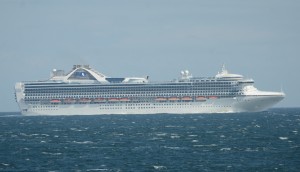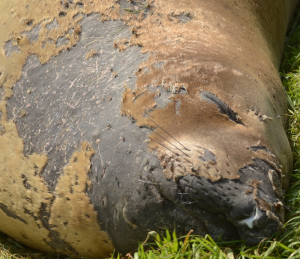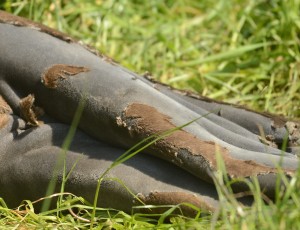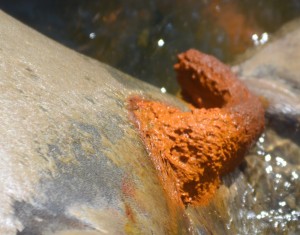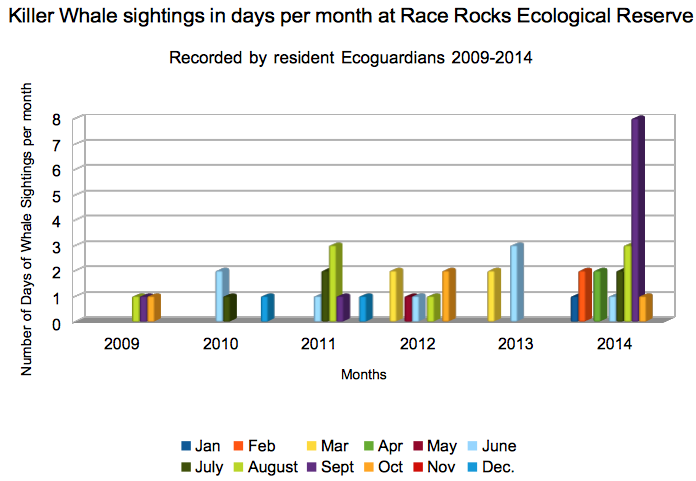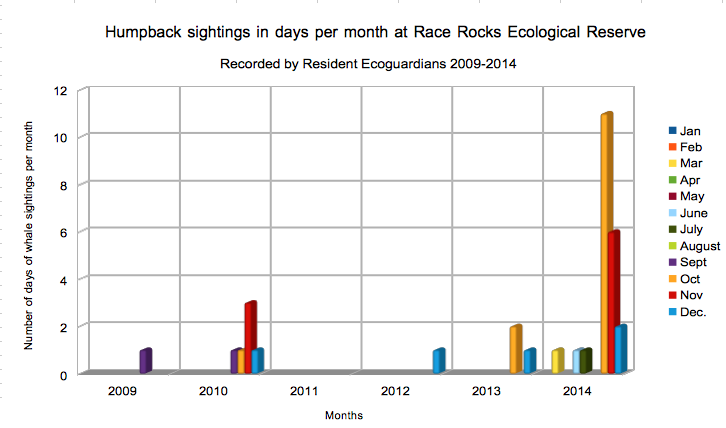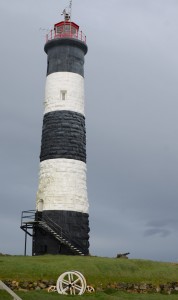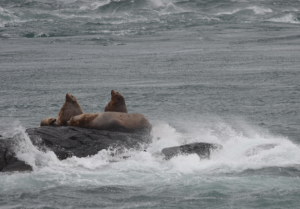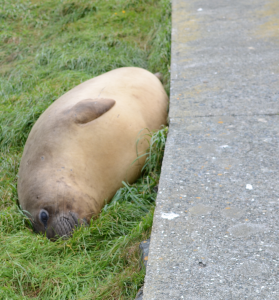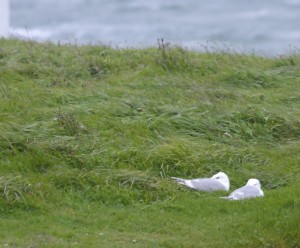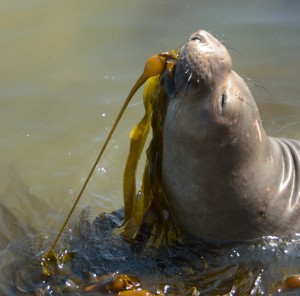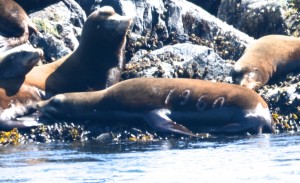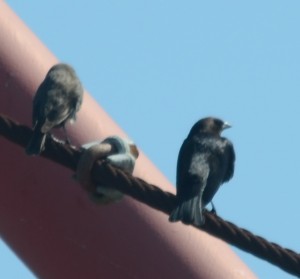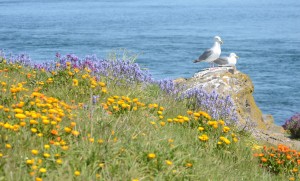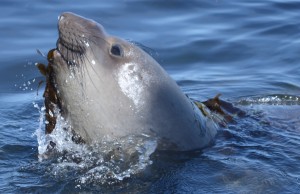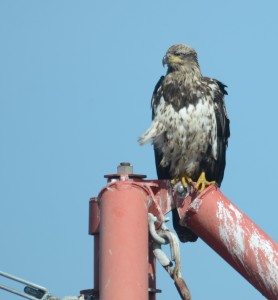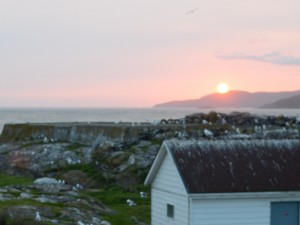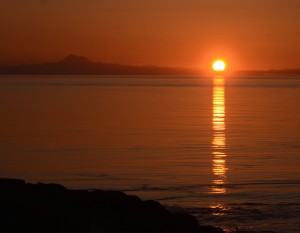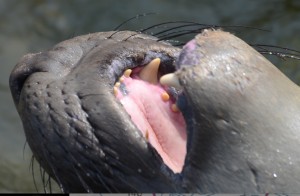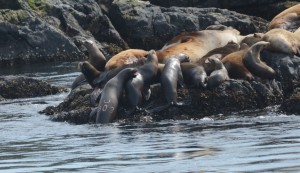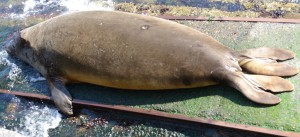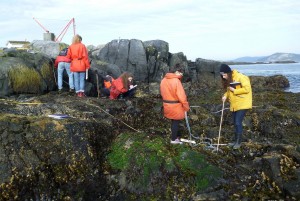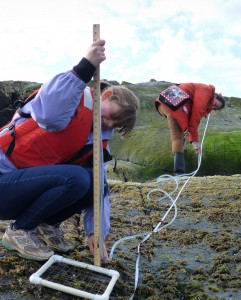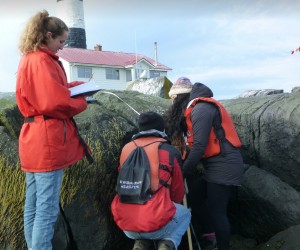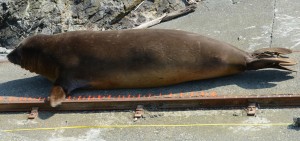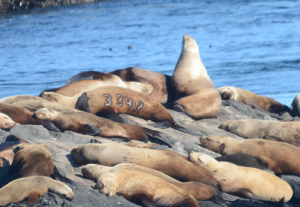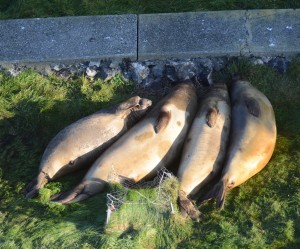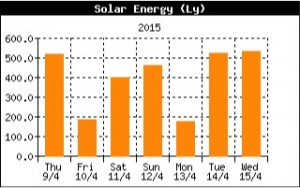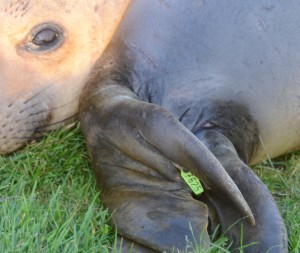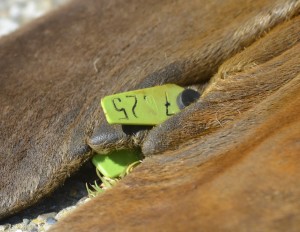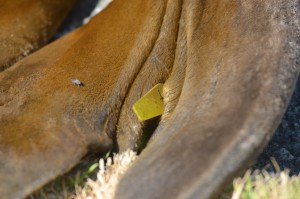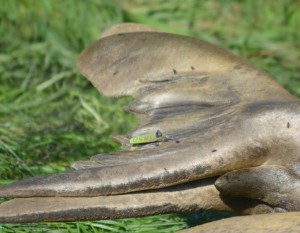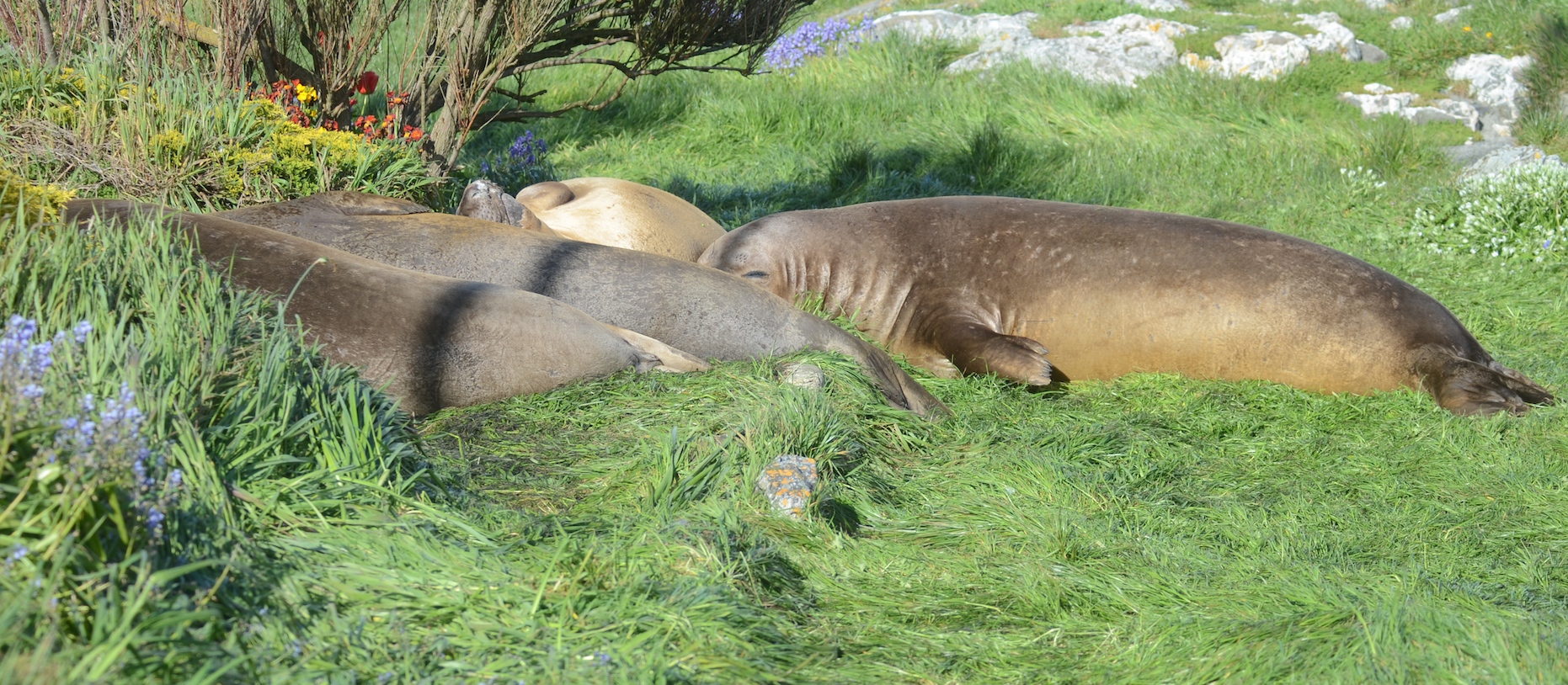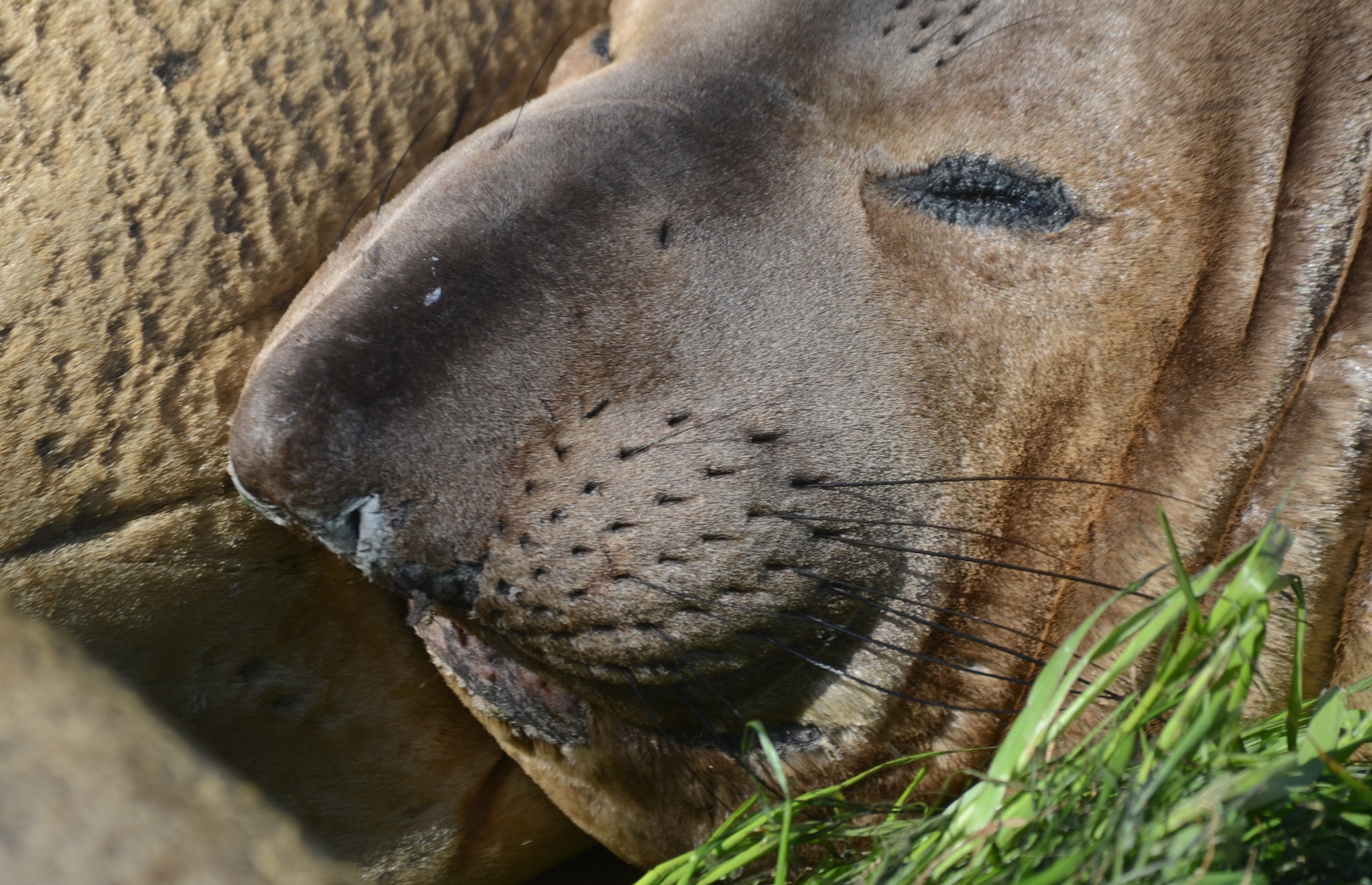The posting of this log was delayed a day.
Again the westerly wind blew spring and hints of summer onto the continent, funneling in through the Strait of Juan de Fuca. After a clear night, the wind was not quite so dramatic as yesterday, warping up to a steady 25 – 35 knots most of the afternoon. The sky was clear all day too with the highest energy level so far this week. The barometer climbed to a high of ~1019 hPa before dropping at a similar slope in the afternoon. A strong wind warning remains in effect, with winds forecast to lighten by the weekend. The forecast is for periods of rain tomorrow brought in by the southeasterly.
There were only two boats in the Ecological Reserve today; Second Nature and a sports fisher who heading toward Becher Bay, the hard way. Second Nature brought two groups of second year marine science students out for their last field trip before the final exam but was unable to land so both field trips did at-sea activities within and within sight of the ER. The sports fishing vessel came through the reserve around 18:00 and I was concerned that they were going to get into serious trouble as they were slamming through the big break on the west side and for a while not making headway and looking like they were taking on water. Luckily they made it through and probably won’t be back, at least not when the wind and tide are working in concert to make the sea stand on its head in the race.
A large cruise ship passed by quite close by south of Race Rocks. I first noticed the Coho with her stern towards Race Rocks and then saw why. She was trying to get around this big princess. Thank goodness for vessel traffic control. As I took the photo, I noticed the heavy lift ship Blue Marlin, in Port Angeles,with what appears to be an oil rig on her deck.
Ecological happenings include continued activity as reported for the last few days. The Northern Elephant Seal moult is proceeding and I am going to go to collect either some moulted skin or whiskers for stable isotope analyses. Stable isotope analyses are really useful in helping to understanding diet and trophic level (how far up the food chain) and can also be used to gain insight on toxins, migration and habitat use.
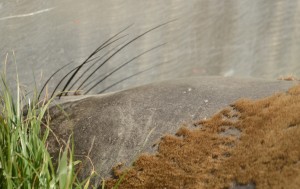
This female is shedding her skin along with the very short fur. Those amazing whiskers can pick up pressure waves from prey to find food in the dark deep.
In the “old days” and still in some places, scientists would anaesthetize elephant seals to collect information. This is a potentially dangerous activity (for animals and people), and while the animals were unconscious, researchers would take measurements, sample and ‘lavage’ the seal’s stomach to figure out what they were eating. It is now possible to be less intrusive; more risk adverse and more innovative in data collection. Measurements can be determined using digital photography from a distance. Sampling shed skin or moulted whiskers for an isotope sample can help scientists to learn about a range of health and ecology questions ranging from ecotoxicology to how much of the diet is fish, squid or krill. Another ‘old school’ method for looking at diet, still used, is scatology. It involves collecting faeces. I am going to pass on that one, but here is a photo. I am curious if the bright orange colour comes from krill, or sockeye?
To change the subject, there were a couple of sparrows here today but they were so shy and fast that I did not get a good look at them. They reminded me of the Savannah Sparrows that were here last fall. I wonder if they nest here?
There were no visitors today (on shore). Chores were various and routine.

